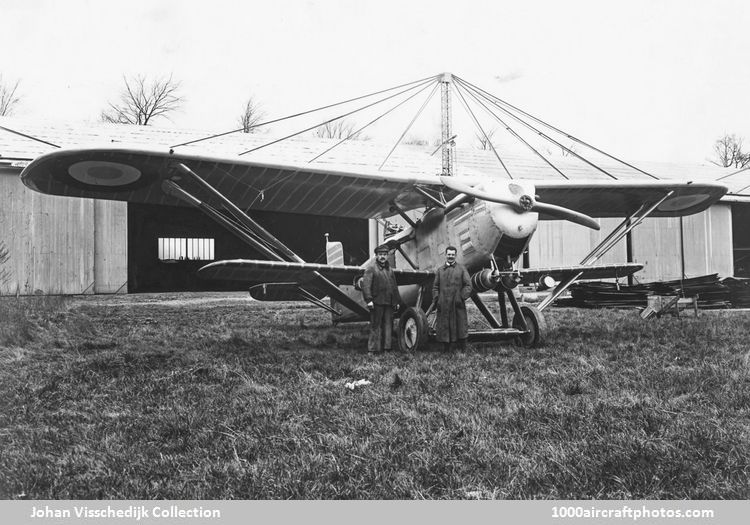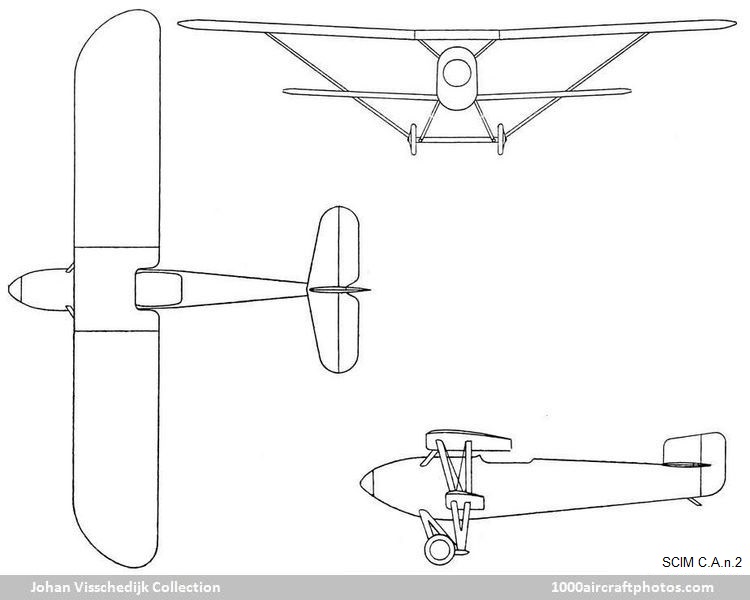The new company built a new all-metal sesquiplane, which has been erroneously attributed to Borel, as Gabriel Borel was not involved in the company nor in development of the aircraft. This aircraft was reportedly flown in 1925, earlier SCIM had issued the following data on November 5, 1923."
Type: Two-seat night fighter.
Wings: The spars of the main and secondary wings are constructed of rectangular duralumin tubes. The spars on the main wing are lightened by triangular holes on the vertical side, in such a way that the spar forms a beam with vertical posts where the ribs are, and with diagonal ties.
The vertical posts are stiffened by the ribs but the diagonals are not stiffened as they only work in tension. In this manner there are no rivets used in the spar construction.
The ribs are composed of a triangular system of U-profile 8/10 duralumin which are joined by U-profile 5/10 elements to form the caps. This is all assembled using tubular rivets. The ends of the spars are boxes of sheet duralumin.
In general, the tubes, struts, spacers, and structural elements are made of duralumin, the connection pieces are most of the times made of steel.
Fuselage: The fuselage is partly a rectangular section where spars, mounts, cross-pieces are made of duralumin tubing, the whole being braced with piano wire. A frame made of wood supports the canvas to secure a form of good penetration.
The engine mounting in the nose of the fuselage, consists of a vertical box of duralumin sheet to which are fixed the U-profile motor supports, four horizontal brackets of duralumin sheet and four steel tubes. The whole forms a pyramid. The engine is therefore very accessible and can easily be removed.
At the rear of the fuselage, the skid is articulates in all directions beneath the tail area and is fastened with bungees to a cross-piece held by piano wire to the last cross piece of the fuselage.
Controls: The tail surfaces are of similar construction as the wings. The elevator, rudder and ailerons are controlled by a system of cables, links and horns. The aileron controls pass through the secondary wing and through the fairing of the main wing.
Landing gear: The left and right landing gear are identical, and each side consists of duralumin tubes which form an N, interconnected by a duralumin rod. At the same point at the bottom are two airfoils attached. The wheels are 750x125mm with a 2.1m track. The axle and the horizontal cross-pieces are covered by a airfoil-shaped fairing.
Various: The engine is a 300 hp Hispano-Suiza.
Various: Fuel is supplied by two A.M. pumps which feed fuel to a dampener.
Various: There are two fuel tanks which are protected.
Various: The oil reservoir is in front of the fuselage under the engine.
Various: The radiator is fitted underneath the front of the fuselage.
Various: The water system includes a tank in the leading edge of a main wing.
Various: The plane is planned to be fitted with dual controls.
Various: The pilot and passenger sit closely one behind the other and can communicate vocally and visually without intercom.

